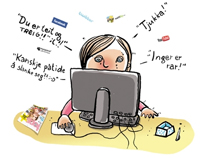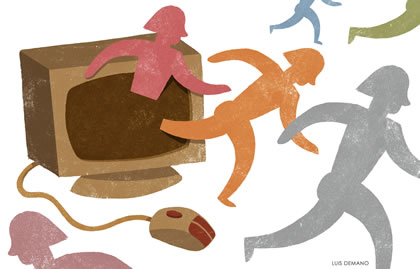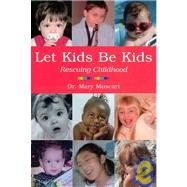Published: December 30, 2010

Illustration on digital bullying by Annlaug Auestad
Two out of three children have experienced bullying via the Internet or mobile phones according to a survey made by Telenor in 2008 in Norway. The survey also shows that parents are uncertain about what to do about this kind of bullying.
1. Take bullying through social media seriously
2. Talk with children and young people about Internet use and netiquette
3. Get involved in the children’s Internet use and become friends with your children on Facebook
4. Remember to save harassment and threats on the hard disc and mobile device
5. Contact the police on suspicion of offenses
For many victims of bullying cyber-bullying is just one of several ways in which they are being harassed. This may mean that they never have any protected place. At school, they are left out or maligned and when they come home they receive insults on mobile phones and net. Access to social media in recent years has unfortunately provided some new bullying tools,”
Tove Flack
Research Fellow Tove Flack at the Centre for Behavioural Research (SAF) at the University of Stavanger has extensive experience in counselling work in anti-bullying, which includes the centre’s program zero, where zero tolerance for bullying and active involvement are important concepts. Zero gives schools advice on how to prevent, detect and solve problems and create continuity. She has also worked with cases of bullying and conducted bullying research in schools. In her research and practice, she has particularly focused on hidden bullying. Curious? Continue reading
Published: December 15, 2010
 Cyber bullying is an emerging phenomenon that is becoming increasingly common among teenagers. Research by the University of Valencia (UV), based on a study carried out in the region, shows that between 25% and 29% of all teenagers have been bullied via their mobile phone or the internet over the past year. [continue reading…]
Cyber bullying is an emerging phenomenon that is becoming increasingly common among teenagers. Research by the University of Valencia (UV), based on a study carried out in the region, shows that between 25% and 29% of all teenagers have been bullied via their mobile phone or the internet over the past year. [continue reading…]

Image: University of Alabama
New research shines a light on the phenomenon of “cyber bullying,” suggesting that nearly 1 in 10 children are bullied through electronic means such as text messages, and girls are more likely to be victims than boys are.
Other kinds of bullying remain much more common, however. Large numbers of kids continue to harass each other by spreading rumors, turning fellow students into outcasts and intimidating others through words and violence.
There is a bright spot: The findings suggest that parents have the power to prevent kids from bullying or being bullied. [continue reading…]
 Tips on spotting the warning signs of cyberbullying and how to help your child deal with the issue, from Mary Muscari, associate professor at Binghamton University, State University of New York, and author of
Tips on spotting the warning signs of cyberbullying and how to help your child deal with the issue, from Mary Muscari, associate professor at Binghamton University, State University of New York, and author of
Not My Kid: 21 Steps for Raising a Nonviolent Child and Let Kids be Kids:Rescuing Childhood. Cyberbullying, the sending or posting of harmful or cruel text or images, using the Internet or other digital communicationdevices, affects almost half of today’s teens. Cyberbullying messagesand images may be posted on personal, web sites or blogs, ortransmitted via email, discussion groups,  chat, Instant Messenger (IM),text and smart phones.
[continue reading…]



 Tips on spotting the warning signs of cyberbullying and how to help your child deal with the issue, from Mary Muscari, associate professor at Binghamton University, State University of New York, and author of
Tips on spotting the warning signs of cyberbullying and how to help your child deal with the issue, from Mary Muscari, associate professor at Binghamton University, State University of New York, and author of